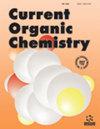基于嵌合反应的硒唑并[3,2-a]吡啶鎓衍生物新家族以及硒和硫的喹啉并[3,2-a]吡啶鎓类似物的抗菌活性对比分析
IF 2.1
3区 化学
Q3 CHEMISTRY, ORGANIC
引用次数: 0
摘要
基于 2-吡啶硒氯与不饱和杂原子和杂环化合物的环化反应,高产率合成了新型硒唑并[3,2-a]吡啶-4-鎓衍生物家族。通过 2-吡啶烯酰氯与不饱和杂原子和杂环化合物的环化反应,获得了类似的新噻唑并[3,2-a]吡啶-4-鎓衍生物。与乙烯基醚和 N-乙烯基咪唑的反应得到了 3-取代的硒唑并[3,2-a]-和-[1,3]噻唑并吡啶-4-鎓衍生物,而与烯丙基醇、烯丙基氯、烯丙基溴、3-丁烯酸、4-戊烯酸和 5-己烯酸的反应则发生了相反的化学反应,得到了 2-取代的[1,3]喹啉并[3,2-a]吡啶鎓。评估了所获产物对革兰氏阳性菌和革兰氏阴性菌的抗菌活性,发现了具有高活性的化合物。将[1,3]硒唑并[3,2-a]吡啶-4-鎓衍生物的抗菌特性与其硫类似物进行比较后发现,硒化合物的活性更高。本文章由计算机程序翻译,如有差异,请以英文原文为准。
A Novel Family of Selenazolo[3,2-a]pyridinium Derivatives Based on Annulation Reactions and Comparative Analysis of Antimicrobial Activity of the Selenium and Sulfur Analogs of Chalcogenazolo[3,2-a]pyridiniums
The synthesis of a novel family selenazolo[3,2-a]pyridin-4-ium derivatives in high yields was developed based on the annulation reactions of 2-pyridineselenenyl chloride with unsaturated heteroatom and heterocyclic compounds. The analogous new thiazolo[3,2-a]pyridin-4-ium derivatives were obtained by the annulation reactions of 2-pyridinesulfenyl chloride. The reactions with vinylic ethers and N-vinylimidazole gave 3- substituted selenazolo[3,2-a]- and -[1,3]thiazolopyridin-4-ium derivatives, whereas reactions with allyl alcohol, allyl chloride, allyl bromide, 3-butenoic, 4-pentenoic and 5-hexenoic acids occurred with the opposite regiochemistry, affording 2-substituted [1,3]chalcogenazolo[3,2-a]pyridiniums. The antibacterial activity of the obtained products against gram-positive and gram-negative bacteria was evaluated, and compounds with high activity were discovered. A comparison of the antibacterial properties of [1,3]selenazolo[3,2-a]pyridin-4-ium derivatives with their sulfur analogs shows a higher activity of the selenium compounds.
求助全文
通过发布文献求助,成功后即可免费获取论文全文。
去求助
来源期刊

Current Organic Chemistry
化学-有机化学
CiteScore
3.70
自引率
7.70%
发文量
76
审稿时长
1 months
期刊介绍:
Current Organic Chemistry aims to provide in-depth/mini reviews on the current progress in various fields related to organic chemistry including bioorganic chemistry, organo-metallic chemistry, asymmetric synthesis, heterocyclic chemistry, natural product chemistry, catalytic and green chemistry, suitable aspects of medicinal chemistry and polymer chemistry, as well as analytical methods in organic chemistry. The frontier reviews provide the current state of knowledge in these fields and are written by chosen experts who are internationally known for their eminent research contributions. The Journal also accepts high quality research papers focusing on hot topics, highlights and letters besides thematic issues in these fields. Current Organic Chemistry should prove to be of great interest to organic chemists in academia and industry, who wish to keep abreast with recent developments in key fields of organic chemistry.
 求助内容:
求助内容: 应助结果提醒方式:
应助结果提醒方式:


